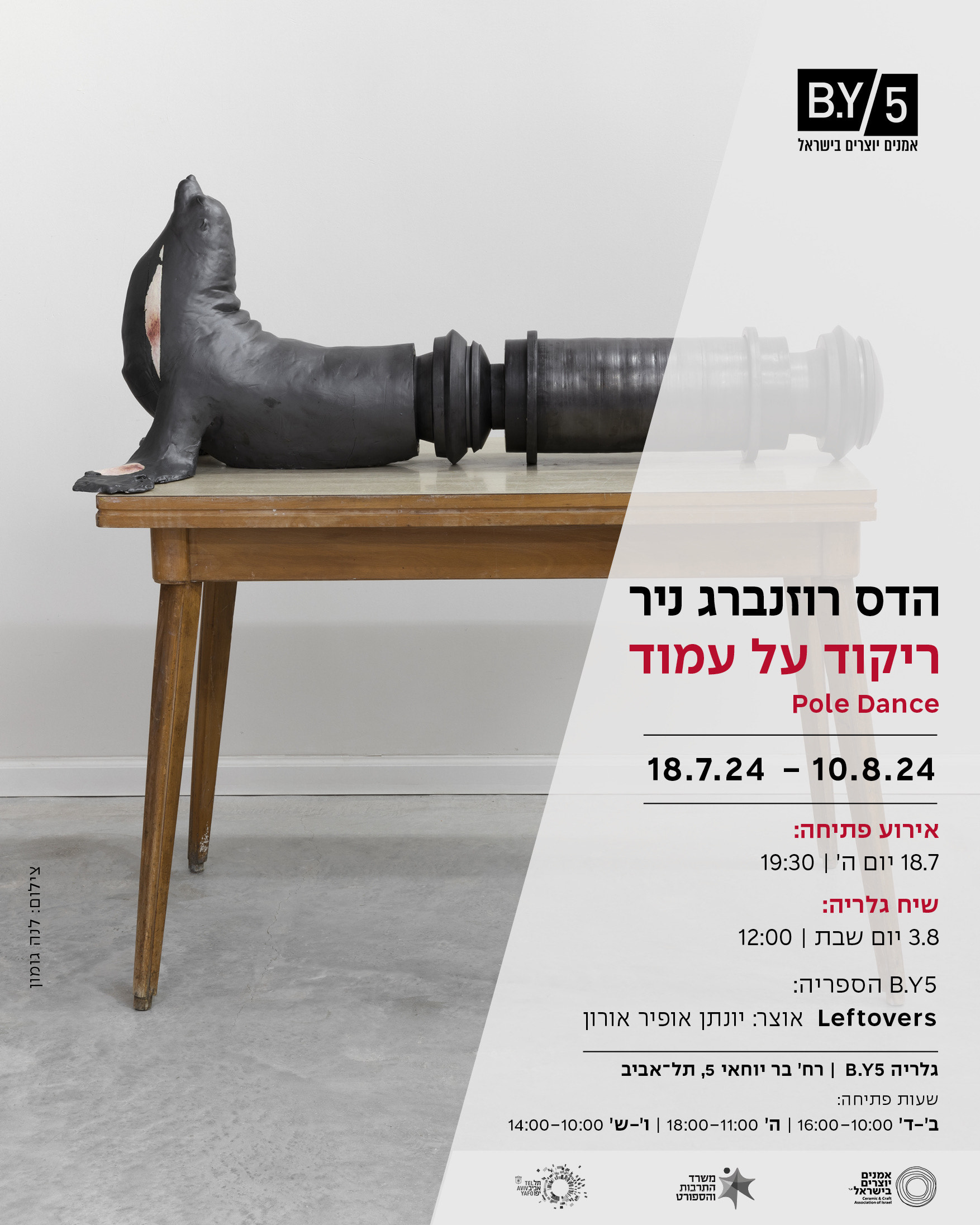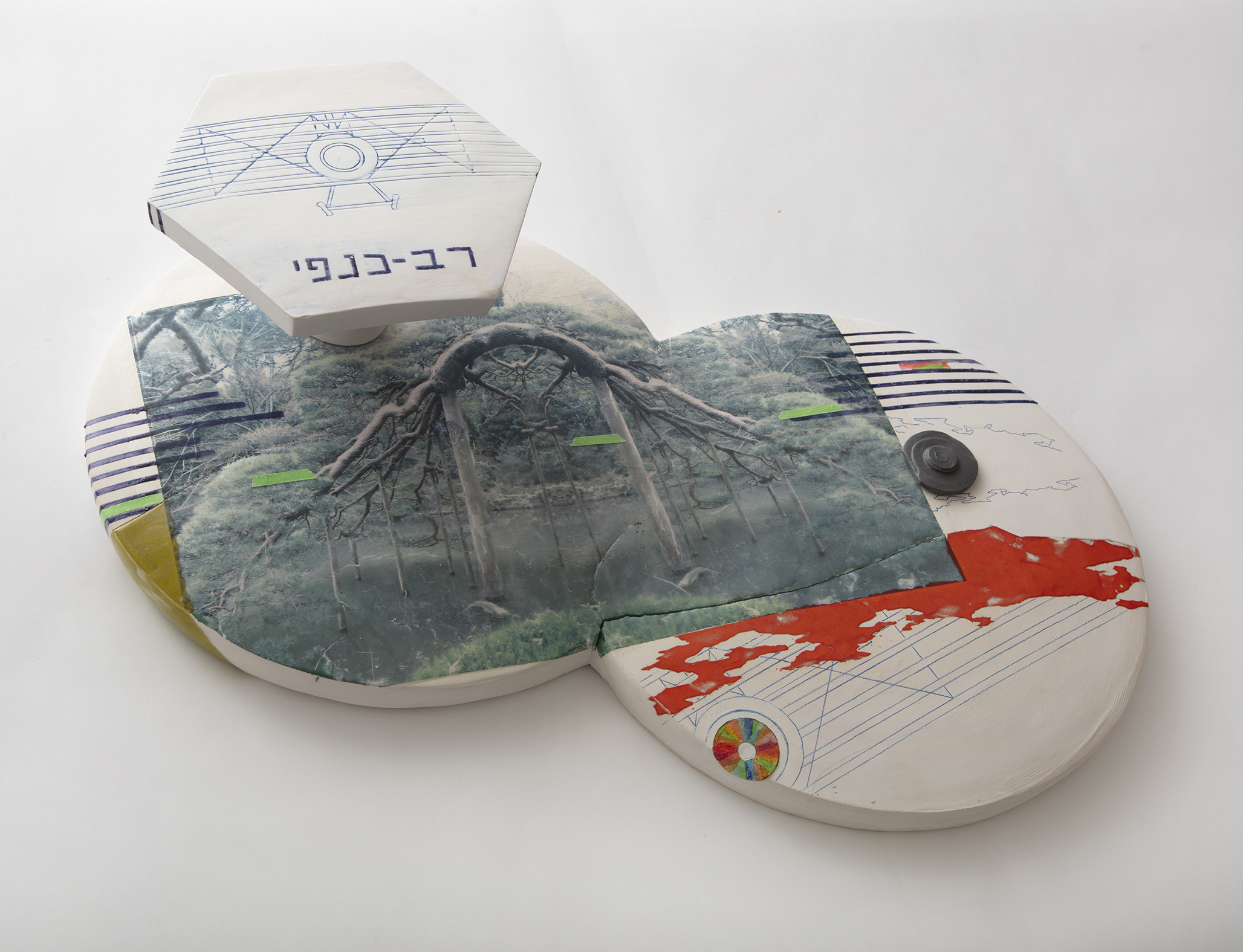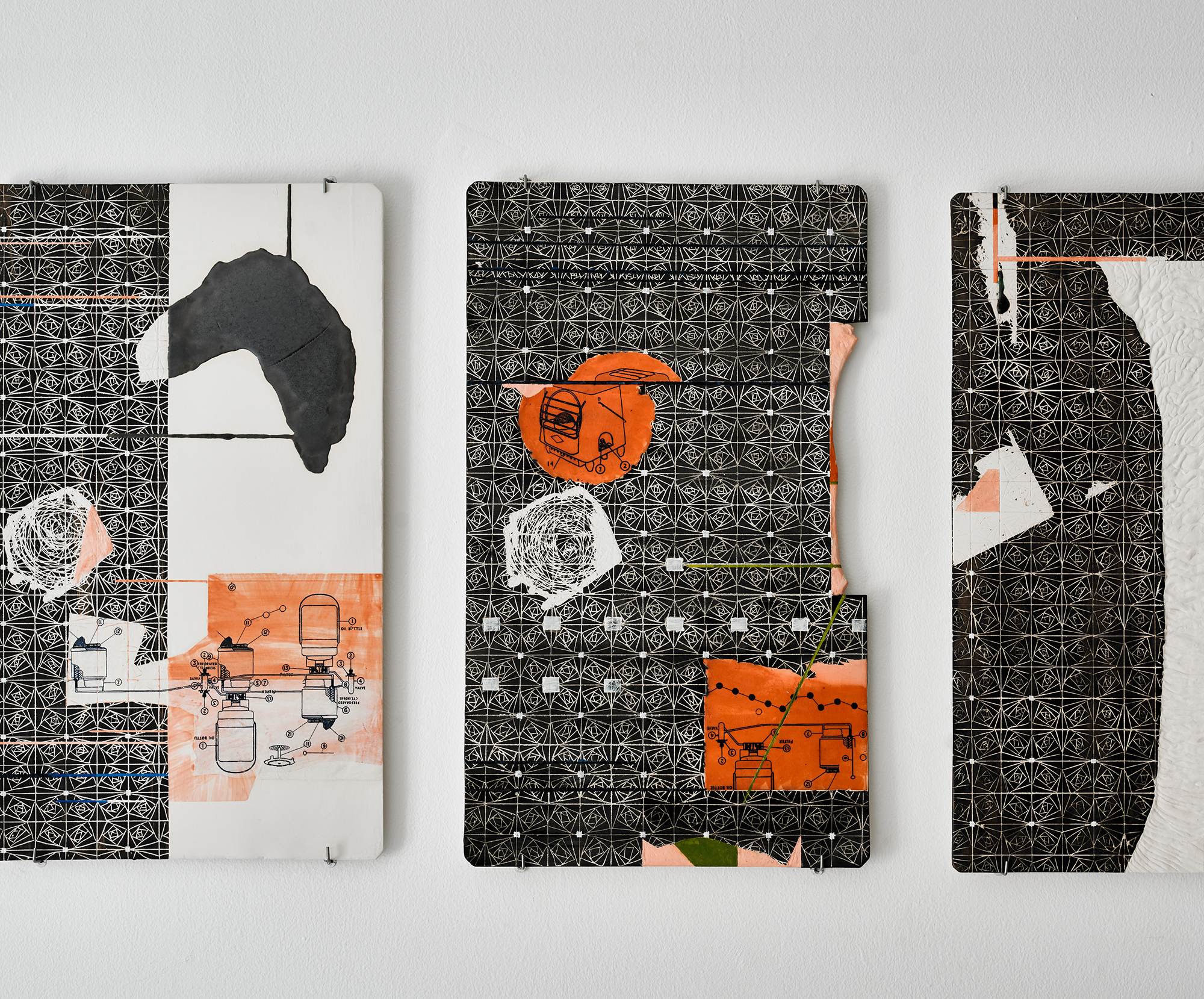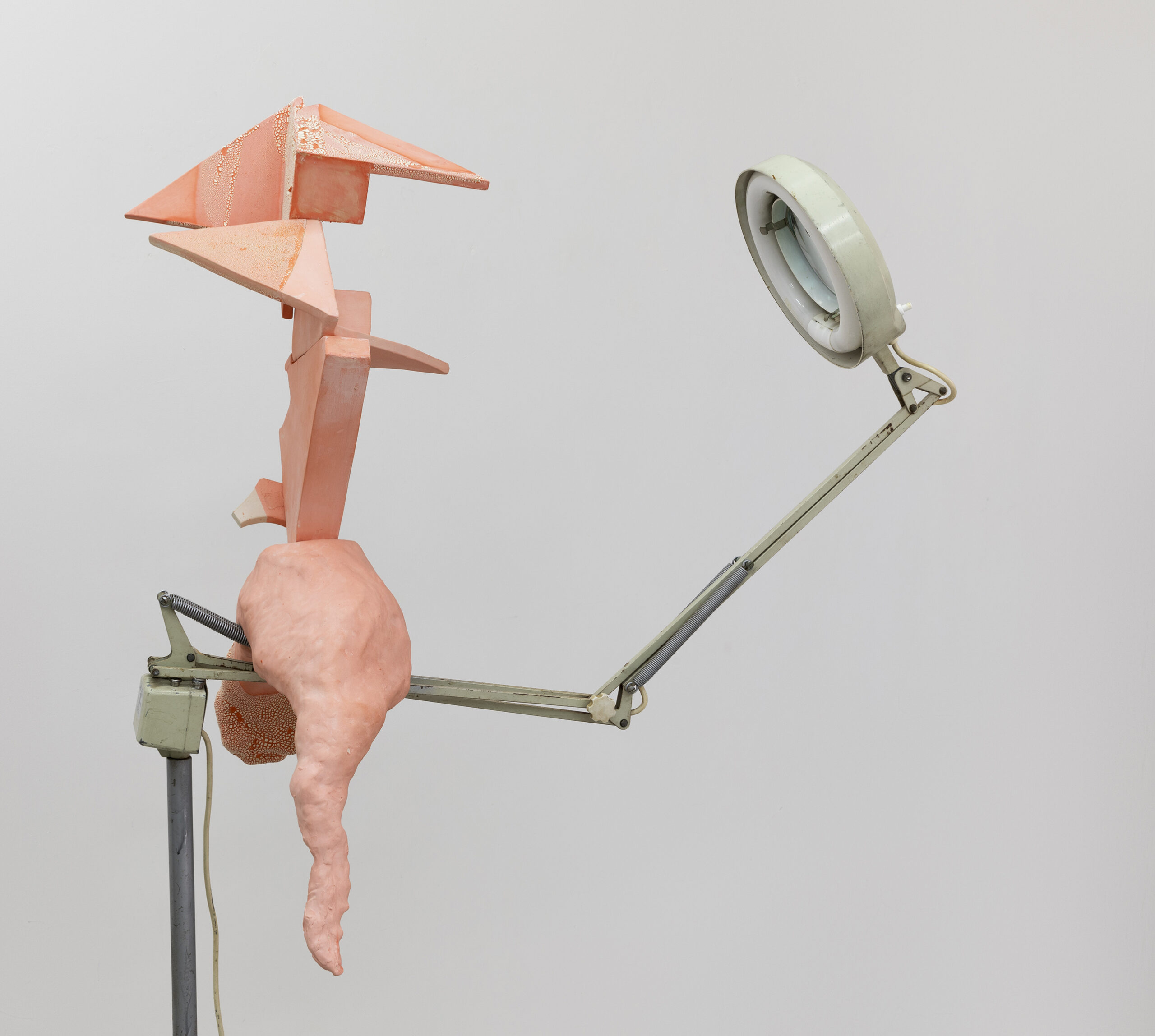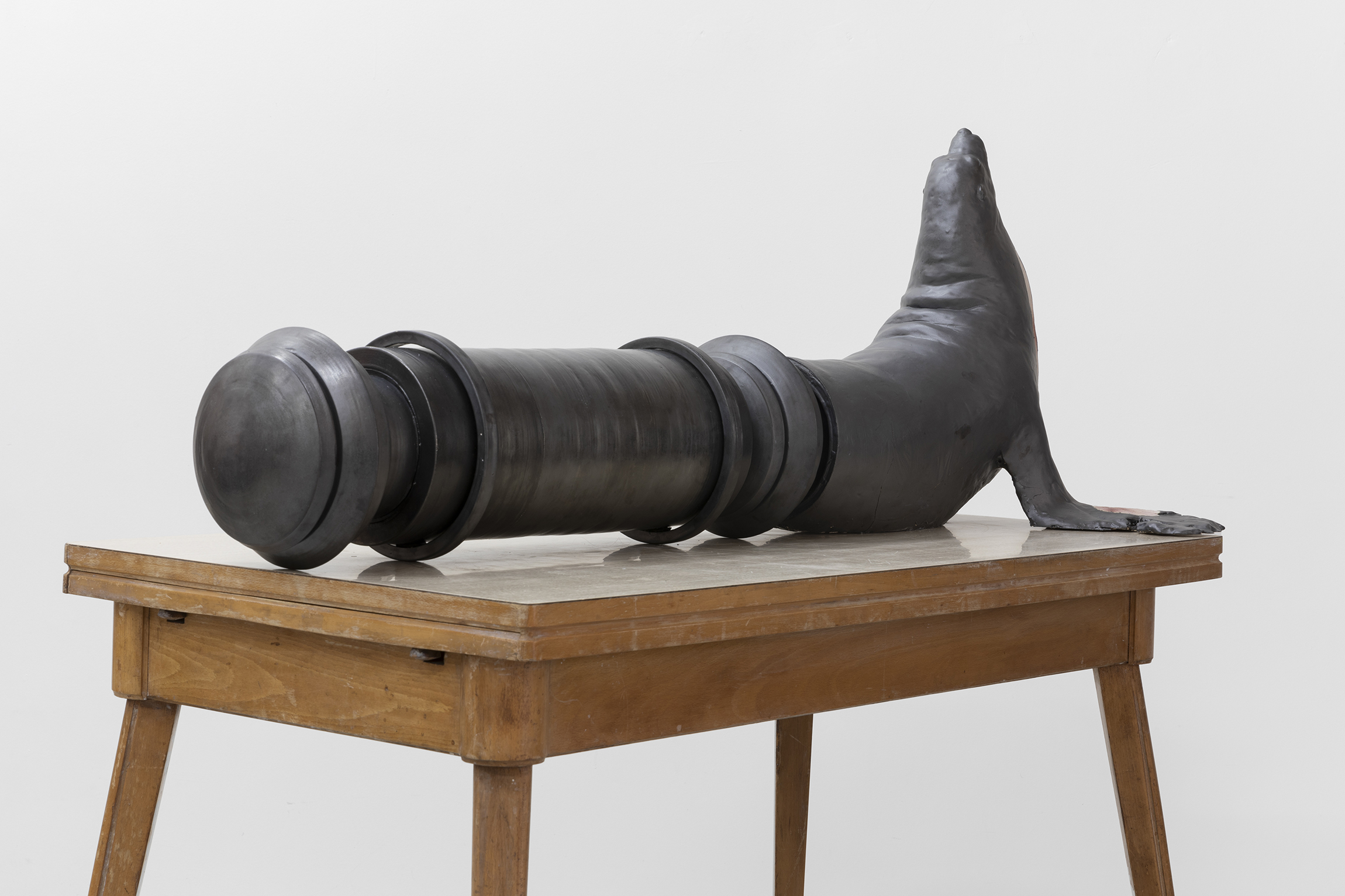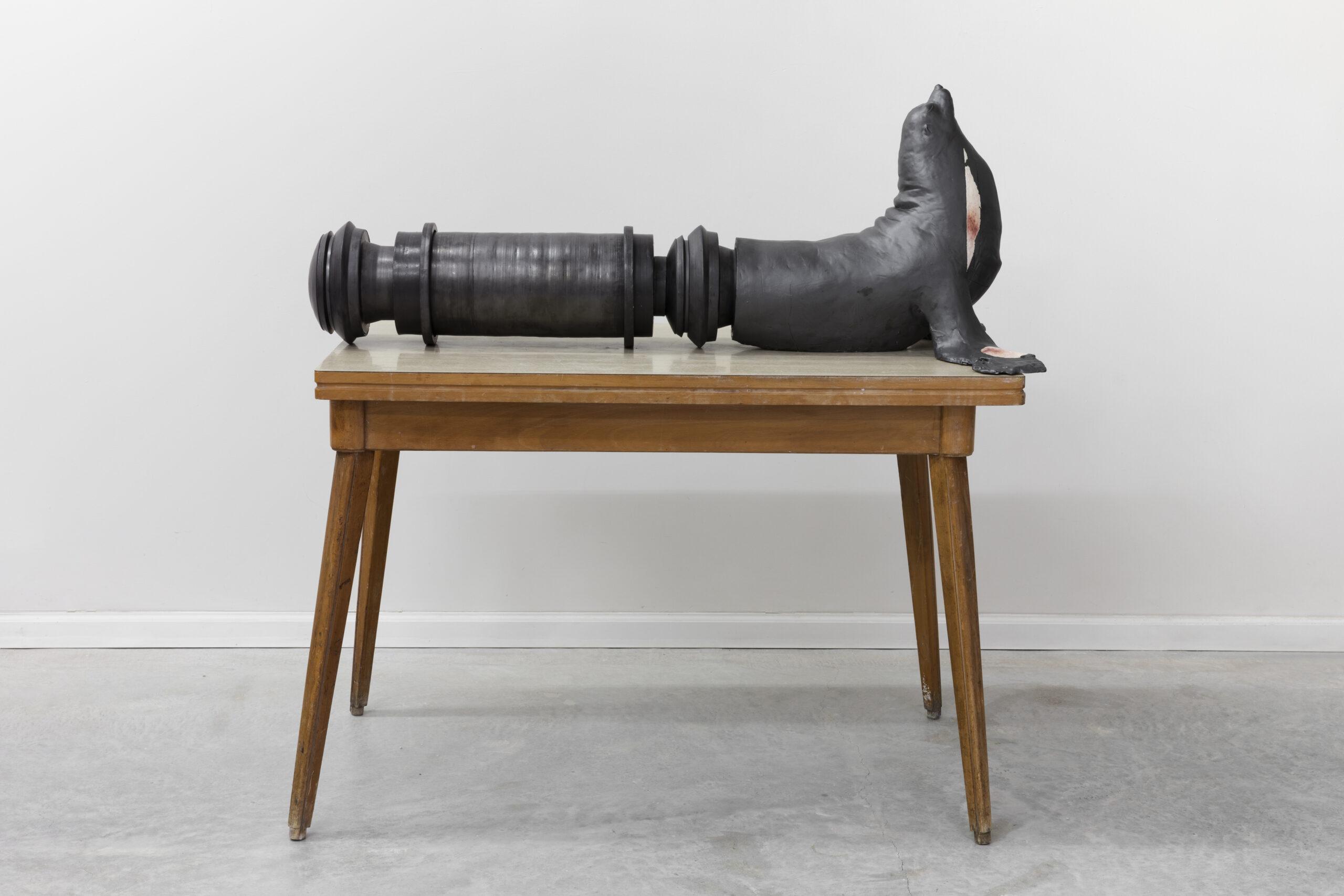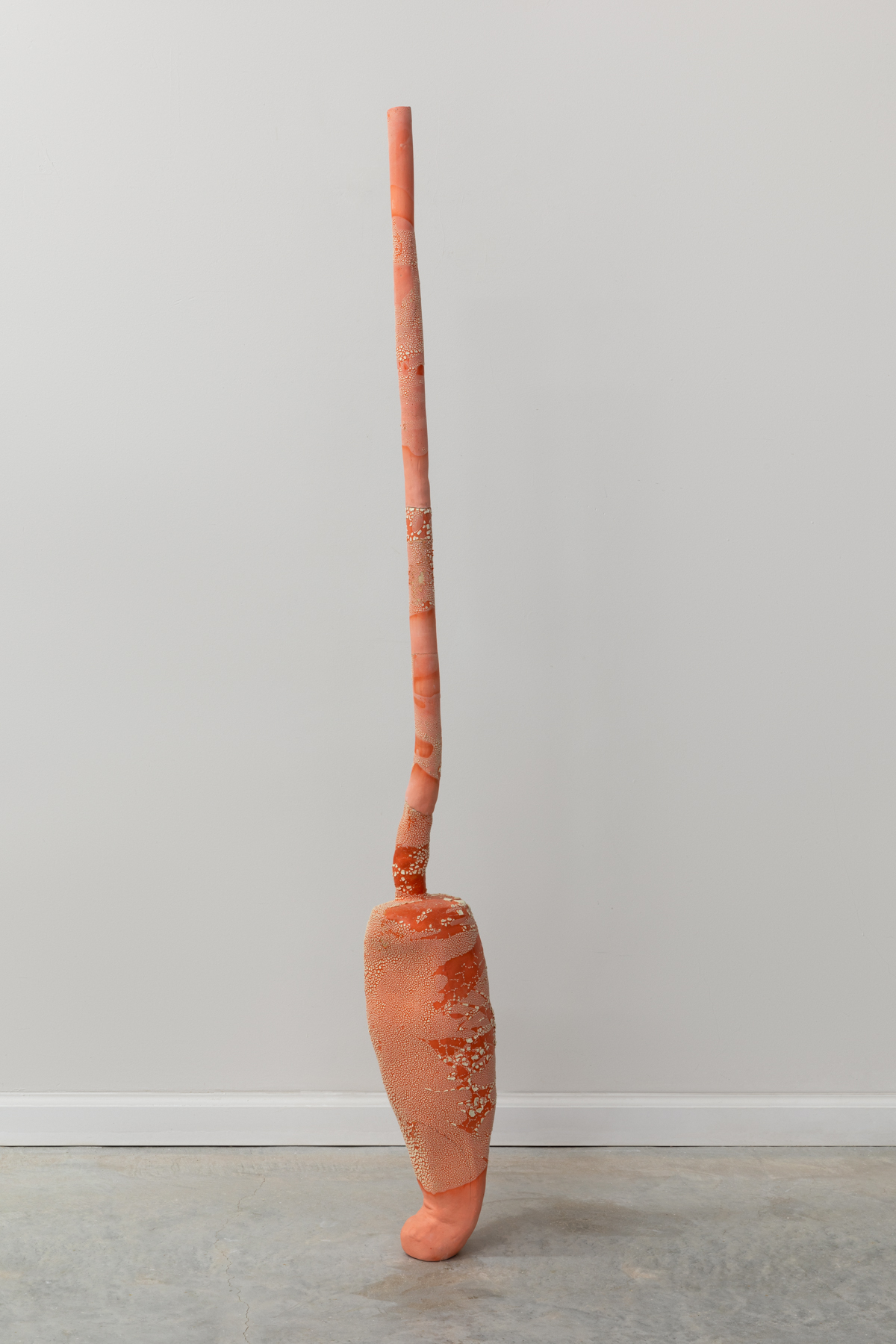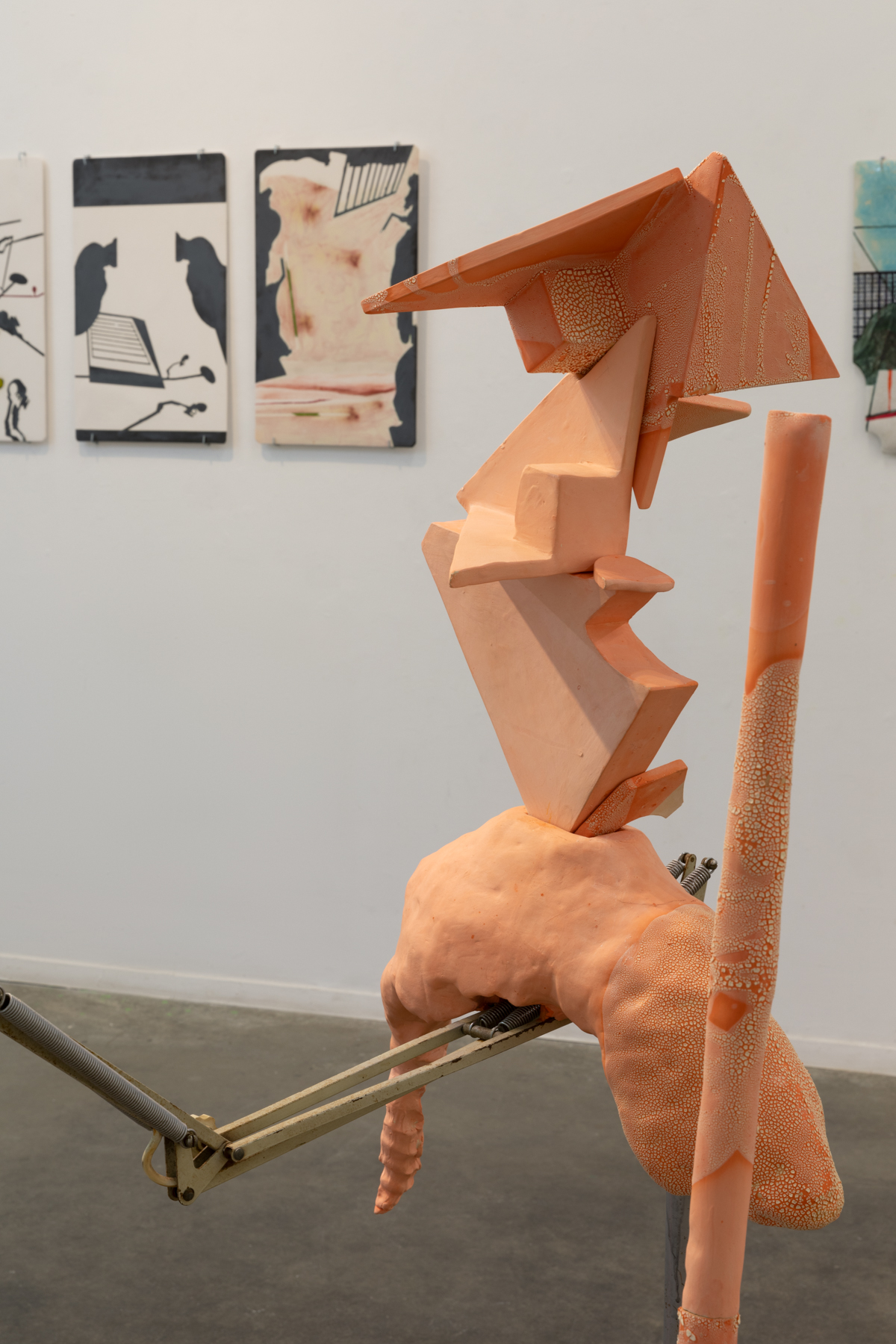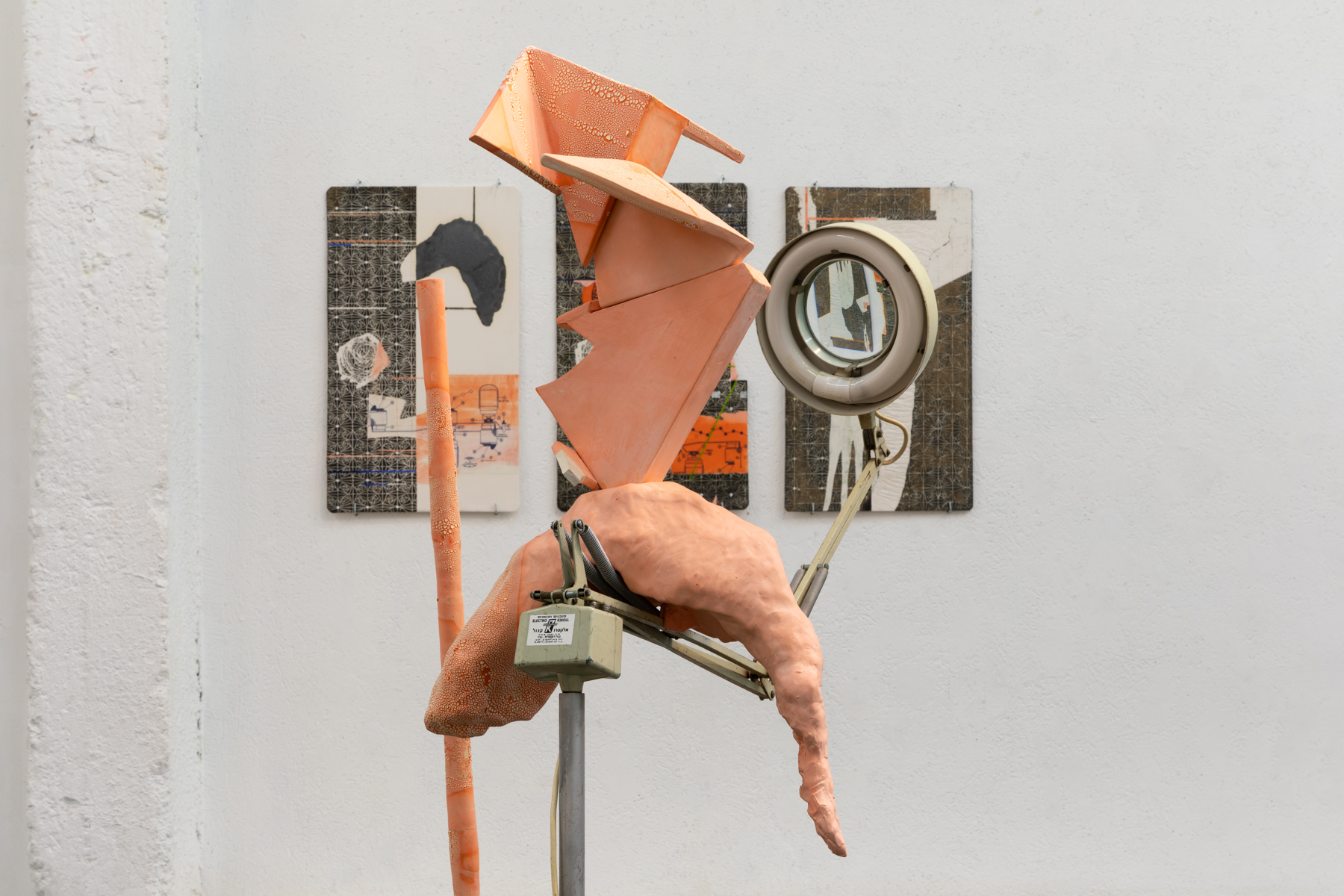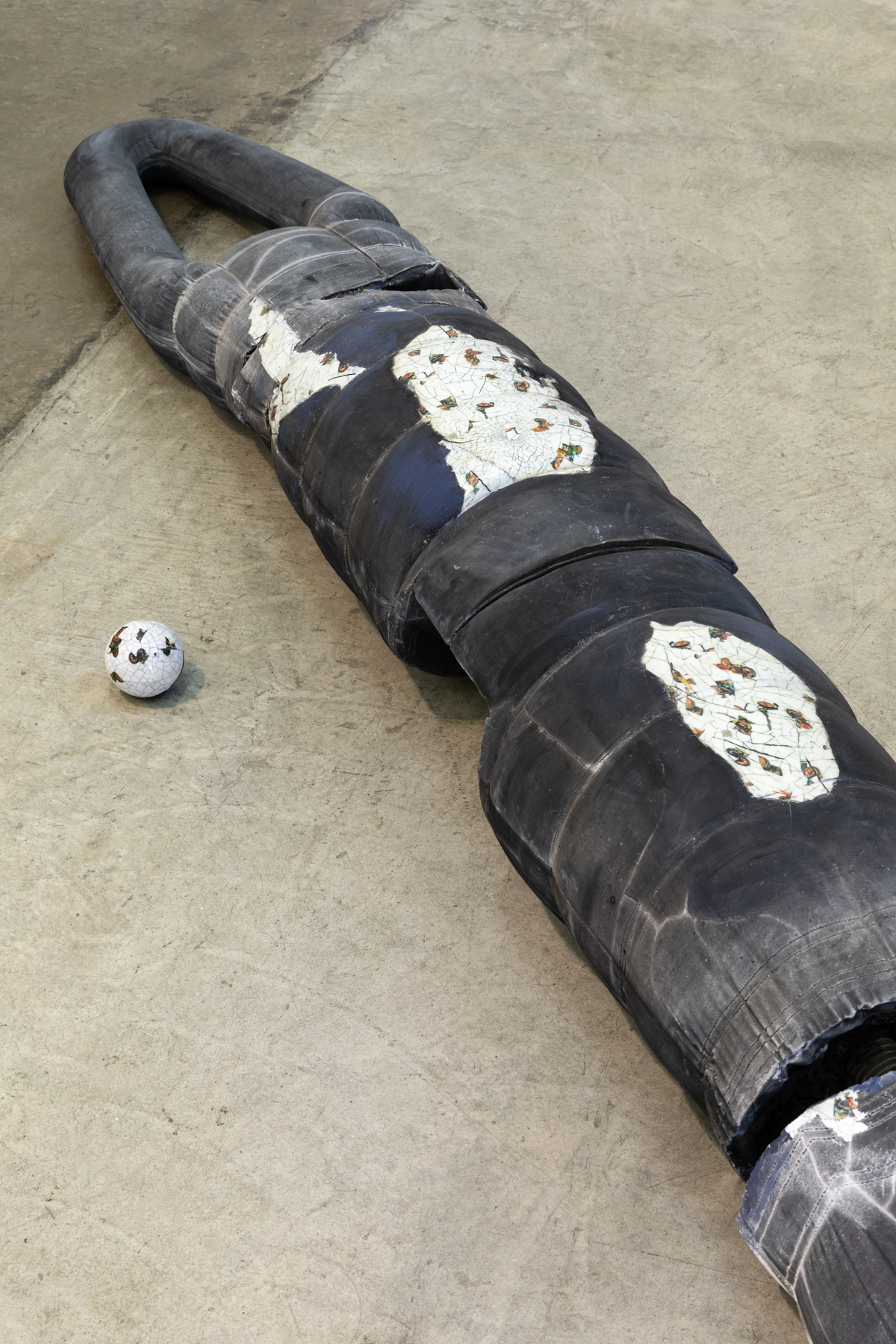Hadass Rosenberg Nir
Pole Dance
Pole Dance
For four decades, Hadass Rosenberg Nir has been translating ideas and material intuitions into actions on clods of clay. The exhibition Pole Dance brings together several central themes in her work. The name of the exhibition is taken from one of the installations and it seeks to resonate, beyond the literal meaning, also a state of limited movement on a vertical axis within a three-dimensional space. There is a shift of weight and tension between the works and the contents they bring together: home, nature, technology and gender.
The ceramic objects presented in the exhibition demonstrate a virtuoso ability of a master of material. However, Hadass abandons the traditional occupation with a ceramic vessel and produces purposeless objects stuck in a liminal state; like refugees in a capitalistic-apocalyptic world where piles of information and material are converted into aggregated lumps, which coalesce with remnants from reality and give birth to hybrids of “nature culture”.
Hadass’ work processes are accompanied by a constant tension between her desire to be carried away by intuition and the need to remain in control. Between yearning for the wild and surrendering to the “domesticated”, and between the utilitarian and the “artistic”. Her creation is an ongoing exploration of the possibilities of material and image. The experienced ceramist resembles an alchemist: she mixes materials, blends colors and tests them at different burning temperatures. All the while she wonders about structures, both in spirit and in matter, about the possibility and the making of the ceramic object.
The works presented in the current exhibition offer a kind of continuous hybrid existence, found in the seam between the living and the mechanical, and represent the ability to hold complexity and several fields of knowledge at the same time. This becomes more pronounced through the images that Hadass imports into the clay, taken from different worlds: orientalist, biological, technological. The dialogue resulting from the combination of parts which are not related to each other, originating from distant sources, functions as a way to create new life formations and multiple meanings. The elusiveness, sometimes enigmatic, of the image is part of the practice of Hadass, who insists on not giving in to the unambiguousness or the disciplining of the creative object, but to preserve a situation in which there exists a polyphony of meanings which does not come to an absolute decision. In this way, the passing time covers the works not only with dust, but with other meanings as well.
Maya Zehavi, 2024
In the gallery’s library: Leftovers, curated by Yonatan Ofir-Oron. A selected “studio table”, a random collection of objects, chemical experiments and fragments that allows the viewer to experience the margins of the creative process.
